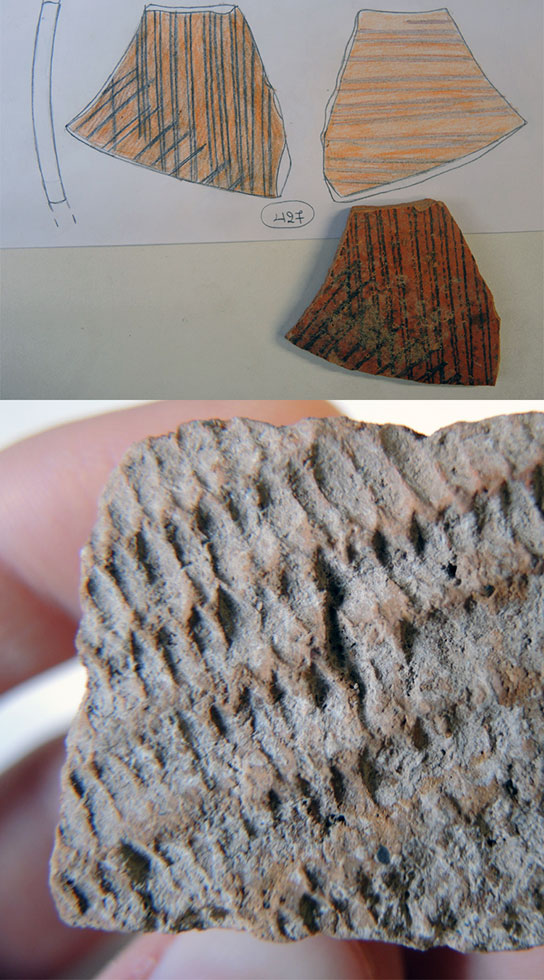Recent ceramic finds from Franchthi Cave unearthed during the enhancement project sponsored by NSRF funds, include a small sample of all pottery types know from the monumental publication of the material excavated by the American expedition, with emphasis on the time span between the 6th and the 4th millennium BC. The collection I have examined contains red-patterned vessels of the Middle Neolithic, unpainted and decorated Urfirnis of the Middle and Late Neolithic, alongside the plain coarse and monochrome polished ware of Late and Final Neolithic.
Although the material comes from various parts of the interior and the exterior of the cave, it documents that the entire area inside and out was occupied by establishments as early as the 6th millennium BC. The pottery confirms that local potters improved upon their firing skills, achieving very high temperatures and using raw materials which obtained lustrous effect on the container surface, without necessarily burnishing intensely. The scale of the material testifies to the application of this technique for the production of huge quantities of these containers in a range of shapes through the latest part of the 6th millennium BC.

